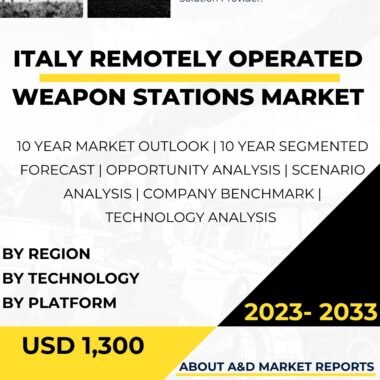Description
The China vetronics market has experienced significant growth and development in recent years. Vetronics, which stands for vehicle electronics, refers to the integration of advanced electronic systems into military vehicles to enhance their operational capabilities. This market analysis provides an overview of the China vetronics market, including key players, market drivers, challenges, and future prospects.
The China vetronics market is characterized by the presence of both domestic and international players. These companies have invested in research and development to enhance the capabilities of their vetronics solutions and meet the specific requirements of the Chinese military.
International players, including renowned defense technology manufacturers such as BAE Systems, General Dynamics Corporation, and Thales Group, have also established collaborations and partnerships in China. These collaborations have facilitated technology transfer, knowledge exchange, and joint development programs, contributing to the advancement of vetronics capabilities in China.
Firstly, China’s focus on military modernization and enhancing its combat capabilities has been a primary driver. Vetronics systems provide critical advantages in terms of situational awareness, command and control, communication, and firepower for military vehicles. As China aims to develop a more integrated and network-centric battlefield environment, the demand for advanced vetronics systems has grown.
Secondly, the need for enhancing soldier survivability and operational effectiveness has fueled the demand for vetronics systems in China. These systems enable vehicles to better protect their crews by integrating advanced protection systems, including armor, sensors, and active protection systems. Additionally, vetronics systems provide improved target acquisition and engagement capabilities, enhancing operational effectiveness on the battlefield.
Technological advancements have played a crucial role in the growth of the China vetronics market. Domestic companies have focused on developing indigenous vetronics solutions with advanced features and capabilities. China has made significant progress in the development of various vetronics systems, including integrated battle management systems, driver vision systems, situational awareness systems, and communication systems.
China has successfully developed and deployed advanced vetronics systems, such as the NORINCO Warrior integrated combat vehicle system, which provides comprehensive situational awareness, command and control, and communication capabilities for military vehicles. The development of driver vision systems, such as the CETC ZKZM-500 laser dazzler, has enhanced vehicle crew’s visibility and target acquisition capabilities. Additionally, communication systems, including secure data links and radio systems, have been developed to improve connectivity and information sharing between vehicles.
Another driver of the China vetronics market is the civilian sector, including applications in fields such as transportation, public safety, and autonomous vehicles. Vetronics technologies find applications in civilian vehicles, such as advanced driver assistance systems, electronic stability control, and telematics. China’s growing interest in smart transportation systems and the development of autonomous vehicles has created a demand for vetronics solutions in non-military applications. The development of vetronics systems for civilian use provides opportunities for technology transfer and commercialization, further driving the growth of the market in China.
However, the China vetronics market also faces certain challenges. One of the primary challenges is the need for continuous investment in research and development to stay ahead of evolving technologies, emerging operational requirements, and changing battlefield environments. As adversaries develop more advanced electronic warfare capabilities and seek to neutralize vetronics systems, China must invest in innovation and advanced technologies to maintain its vetronics capabilities.
Additionally, the market faces challenges related to international export restrictions and arms control regulations. The development and export of vetronics systems are subject to strict regulations due to security concerns and international agreements. This can limit market opportunities and hinder collaboration with international partners.
Looking ahead, the future prospects for the China vetronics market are promising. China’s commitment to military modernization, operational efficiency, and technological advancement will continue to drive investments in vetronics systems. Ongoing research and development efforts, collaborations between domestic companies and international partners, and the integration of emerging technologies, such as artificial intelligence, advanced sensors, and secure communication systems, are expected to result in the introduction of more advanced and capable vetronics solutions.
The integration of artificial intelligence and advanced sensor systems may shape the future of the market. Artificial intelligence algorithms can enhance the automation, decision-making capabilities, and threat detection of vetronics systems, improving vehicle survivability and operational effectiveness. Advanced sensor systems, including radar, LiDAR, and electro-optical/infrared sensors, can improve situational awareness, target detection, and object recognition capabilities, enhancing the overall performance of vetronics systems.
In conclusion, the China vetronics market has witnessed significant growth driven by the country’s focus on military modernization, soldier survivability, and technological advancement. Technological advancements, collaborations between domestic and international players, and the government’s commitment to indigenous defense capabilities have contributed to the development and deployment of advanced vetronics solutions. Challenges related to evolving technologies, export restrictions, and arms control need to be addressed. With ongoing research and development, collaborations, and the integration of emerging technologies, the future of the China vetronics market looks promising, with opportunities for further growth, innovation, and advancements in vetronics capabilities.




